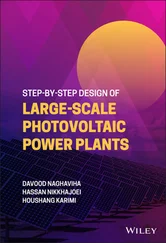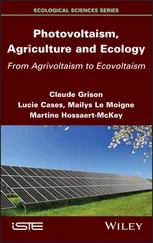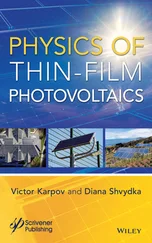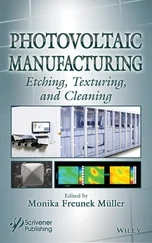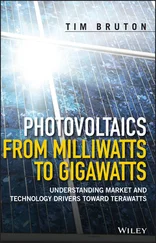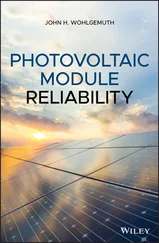6 6. Chu, P.B. et al., Optical communication link using micromachined corner cuber reflectors, in: Proc. IEEE The Tenth Annual International Workshop on Micro Electro Mechanical Systems. An Investigation of Micro Structures, Sensors, Actuators, Machines and Robots, pp. 350–355, Nagoya, Japan, 1997.
7 7. Kickoff slides from MEMS PI meeting, https://people.eecs.berkeley.edu/~pister/SmartDust/, June 1998, accessed 27 January 2020.
8 8. Nowak, R. (Ed.), Proc. of the DARPA Energy Harvesting Program Review, DARPA, Washington, D.C., USA, April 13–14 2000.
9 9. Feynman, R.P. et al., The Feynman Lectures on Physics, vol. I, California Institute of Technology, USA, 1963, Chapter 4.1 https://www.feynmanlectures.caltech.edu/I_04.html.
10 10. Paradiso, J. and Starner, T., Energy scavenging for mobile and wireless electronics. IEEE Perv. Comp., 4, 1, 18–27, 2005.
11 11. Briand, D. et al., Micro energy harvesting, in: Advanced Micro and Nanosystems, Wiley, Weinheim, Germany, 2015.
12 12. Spies, P. et al., Handbook of Energy Harvesting Power Supplies and Applications, Pan Stanford Publishing, Boca Raton, USA, 2015.
13 13. Mitcheson, P.D. et al., Energy harvesting from human and machine motion for wireless electronic devices. Proc. IEEE, 96, 9, 1457–1486, 2008.
14 14. Safaei, M. et al., A review of energy harvesting using piezoelectric materials: State-of-the-art a decade later (2008–2018). Smart Mat. Struct., 28, 113001, 2019.
15 15. Kinetron, 2020. https://www.kinetron.eu/smart-generators/, accessed 27 January.
16 16. ReVibe Energy, 2020. https://revibeenergy.com/, accessed 27 January.
17 17. Roundy, S. et al., Energy Scavenging for Wireless Sensor Networks: With Special Focus on Vibrations, Kluwer Academic Publishers, Boston, MA, USA, 2004.
18 18. Wakeling, J.M. and Nigg, B.M., Modification of soft tissue vibrations in the leg by muscular activity. J. Appl. Physiol., 90, 412–420, 2001.
19 19. EnOcean, 2020. https://www.enocean.com/en/products/enocean_modules_24ghz/, accessed 27 January.
20 20. Donelan, J.M. et al., Biomechanical energy harvesting: Generating electricity during walking with minimal user effort. Science, 319, 5864, 807–810, 2008.
21 21. Bionic Power, 2020. https://www.bionic-power.com/#features, accessed 27 January.
22 22. Fu, H. et al., Energy harvesting from human motion using footstep-induced airflow. J. Phys. Conf. Ser., 660, 1, 2015.
23 23. Sun, C. et al., On piezoelectric energy harvesting from human motion. JPEE, 7, 1, 155–164, 2019.
24 24. Brenes, A. et al., Tunable unipolar synchronized electric charge extraction strategy for piezoelectric energy harvesting. J. Int. Mat. Syst. Struct., 30, 11, 1629–1638, 2019.
25 25. Wood, A.R. et al., EP 2 677 656 A2, Tunable vibration energy harvester and method, General Electric, Schenectady, USA, 2013.
26 26. Zhu, G. et al., Flexible high-output nanogenerator based on lateral ZnO nanowire array. Nano Lett., 10, 3151–3155, 2010.
27 27. PIEZO.COM, https://piezo.com/collections/piezoelectric-energy-harvesters?_=pf&pf_t_quantity=Quantity__1, accessed 27 January 2020.
28 28. Aktakka, E.E. et al., Energy scavenging from insect flight. J. Micromech. Microeng., 21, 9, 095016, 2011.
29 29. Safaei, M. et al., A review of energy harvesting using piezoelectric materials: State-of-the-art a decade later (2008–2018). Smart Mat. Struct., 28, 113001, 2019.
30 30. Betz, A., Das Maximum der theoretisch nutzbaren Ausnutzung des Windes durch Windmotoren. Zeitschrift für das gesamte Turbinenwesen, 26, 307–309, 1920.
31 31. Lissaman, P.B.S., Low-Reynolds-number airfoils. Ann. Rev. Fluid Mech., 15, 223–239, 1983.
32 32. Yuan, M. et al., Recent developments of acoustic energy harvesting: A review. Micromachines (Basel), 10, 1, 48, 2019.
33 33. Freunek, M. et al., New physical model for thermoelectric generators. J. Elec. Mat., 38, 1214–1220, 2009.
34 34. Soong, R.K. et al., Powering an inorganic nanodevice with a biomolecular motor. Science, 290, 5496, 1555–1558, 2000.
35 35. Voltree Power, http://voltreepower.com/bioHarvester.html, accessed 27 January 2020.
36 36. Love, C.J. et al., Source of sustained voltage difference between the xylem of a potted Ficus benjamina tree and its soil. PLoS ONE, 3, 8, e2963, 2008.
37 37. Rasmussen, M. et al., An implantable biofuel cell for a live insect. J. Am. Chem. Soc., 134, 3, 1458–1460, 2012.
38 38. Zebda, A. et al., Challenges for successful implantation of biofuel cells. Bioelectrochem., 124, 57–72, 2018.
39 39. Serdijn, W.A. et al., Chap. 4.2 - Introduction to RF energy harvesting, in: Wearable Sensors: Fundamentals, Implementation and Applications, E. Sazonov and M.R. Neuman (Eds.), Academic Press, San Diego, 2014.
40 40. Cansiz, M. et al., Efficiency in RF energy harvesting systems: A comprehensive review. Energy, 74, 292–309, 2019.
41 41. Lal, A. et al., Pervasive power: A radioisotope-powered piezoelectric generator. IEEE Perv. Comp., 4, 1, 53–61, 2005.
42 42. Kumar, S., Atomic batteries: Energy from radioactivity. J Nucl. En. Sci. Power Generat. Technol., 5, 1, 2016.
43 43. Freunek, M., Theory of information for data science systems, BKW AG, Switzerland, unpublished, 2019.
44 44. Dominitz, J. and Manski, C.F., More data or better data? A statistical decision problem. Rev. Econ. Stud., 84, 4, 1583–1605, 2017.
1 Email: monika.freunek@gmx.de
3 Introduction to Indoor Photovoltaics
Monika Freunek (Müller)
BKW AG, Bern, Switzerland
AbstractIndoor photovoltaics (IPV) is one of the most promising technologies to power IoT and consumer devices in indoor environments. Theoretical efficiency limits exceeding 50%, an established technology, and power densities among the highest of all indoor energy harvesting technologies available, make IPV attractive and an upcoming technology in an expected trillion-dollar market. However, the typical indoor spectral conditions, the optimization goals and processes during design and manufacturing, and the ideal materials differ significantly from the well-established outdoor applications. Thus, IPV devices require specific engineering and characterization. This chapter introduces IPV with its spectra, irradiance levels and operating conditions. Theoretical and demonstrated efficiencies, their modeling, and characterization methods are discussed. Issues such as total energy balance, recycling and lifetime are outlined. With properly adapted design, IPV might be the enabler of many IoT applications in the near future. This chapter provides the state-of-the-art, challenges and solutions for IPV products, and gives an outlook on future products.
Keywords:Indoor photovoltaics, micro energy harvesting, internet of things, wireless sensor nodes, edge nodes, indoor photovoltaic efficiencies, indoor photovoltaic materials
Indoor photovoltaics (IPV) started in the seventies following the invention of microprocessors [1, 2]. In the following decades, IPV was mostly limited to applications such as kitchen scales, solar calculators, and some consumer fun articles [3, 4]. Those devices were designed far beyond their theoretical potential and often suffered from lack of user acceptance, as users most often had to actively place the device close to a window for a proper functioning. In many applications, it was easier and more reliable to power indoor products with batteries or power cords. The introduction of narrow-banded artificial light and ultra-low power electronics, such as the Phoenix Processor with a power consumption in the picowatt range [5], are the technology enabler for IPV, enhancing their applications far beyond those listed above. Recent studies expected IoT systems to become a multi-trillion-dollar market within the next few years [6]. In many applications, IPV will be the ideal technology to supply the power for the IoT devices.
Читать дальше





